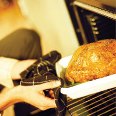
NFPA Offers Thanksgiving Day Cooking Safety Tips
In 2006, Thanksgiving Day topped the charts once again as the peak day for home cooking fires. According to National Fire Protection Association, there were 1,400 home structure fires involving cooking equipment that year, which is more than three times the daily average.
In addition, cooking is the leading cause of home fires and home fire injuries. Each year, hundreds of people in the United States are killed in fires that involve cooking equipment and thousands more are injured. Annually, these fires result in more than half a billion dollars in direct property damage to homes and their contents.
"Cooking fires can easily be prevented by following a few simple precautions, such as staying in the kitchen when preparing a meal because fires often start when items cooking are left unattended," said Lorraine Carli, NFPA's vice president of communications. "As much as unexpected guests are sometimes a part of the holidays, you don't want the fire department arriving because your feast is going up in flames."
NFPA offers these tips for safer cooking:
- Stay in the kitchen when you are frying, grilling, or broiling food.
- If you must leave the kitchen for even a short period of time, turn off the stove.
- If you are simmering, baking, boiling, or roasting food, check it regularly; remain in the home while food is cooking; and use a timer to remind you that the stove or oven is on.
- Keep in mind that you should avoid wearing loose clothing or dangling sleeves while cooking. Loose clothing can catch fire if it comes in contact with a gas flame or electric burner.
- Keep kids away from cooking areas by enforcing a "kid-free zone" of 3 feet (1 meter) around the stove.
- If you have young children, use the stove's back burners whenever possible, and turn pot handles inward to reduce the risk that pots with hot contents will be knocked over.
- Never hold a small child while cooking.
- Keep anything that can catch fire--pot holders, oven mitts, wooden utensils, paper or plastic bags, food packaging, towels, or curtains--away from your stove top.
- Clean up food and grease from burners and the stove top.